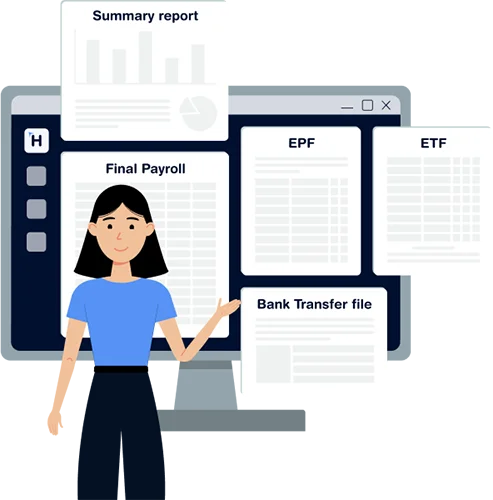In the early days of running a small business, it’s common to keep employee records in bits and pieces: a file cabinet here, an Excel sheet there, and some important details saved in emails or WhatsApp messages. It works, at least for a while. This is a practice that many Sri Lankan SMEs will attest to in their first few years.
But as your team grows beyond five or ten people, things start slipping through the cracks. You can’t remember who’s on probation, who changed their bank details last week, or where you saved that scanned copy of someone’s contract. This is when a centralised employee management system starts to become essential, not just nice to have.
Whether you’re a clothing manufacturer in Gampaha or a growing tech firm in Colombo, here’s why investing in a proper employee database can make a huge difference.
One Place for All Employee Information
A centralised system brings all your employee data into one place. That includes personal information (like NIC numbers, addresses, and contact details), employment details (designation, department, salary history), and even compliance documents (EPF/ETF registration, signed contracts).
Instead of searching across multiple folders or asking HR or Finance for updates, all stakeholders, from the business owner to department leads, can access accurate, up-to-date information instantly. And with access controls, you decide who sees what.
Reduces Errors and Inconsistencies
When employee data is managed across multiple formats or updated manually in separate places, inconsistencies are bound to happen. A salary increment might be updated in payroll but not reflected in the official HR records. Or someone’s emergency contact might change, but the new number is only saved on a supervisor’s phone.
With a digital employee management system, updates are made in one place and synced across the board, reducing manual errors, confusion, and the time spent double-checking entries.
Streamlines Onboarding and Offboarding
As SMEs expand, hiring and resignations become more frequent. A centralised system makes it easy to onboard new employees by having predefined fields, standardised forms, and required document uploads all in one place.
When someone exits, you can clearly track their final working day, calculate final payments accurately, and mark their status as inactive, while still retaining their history for future reference or audits. This makes HR admin less reactive and more structured.
Supports Payroll and Compliance Accuracy
Your payroll system relies on accurate employee data. Bank account details, EPF numbers, salary levels, and employment status all affect how salaries are calculated and processed.
With a centralised system, payroll processing becomes smoother, and reports like T10 or the APIT Annual Statement can be generated without the back-and-forth of verifying individual employee records.
It also reduces the risk of non-compliance, especially when Labour Department audits or EPF inspections are due. Having a full employee history in one secure system gives you peace of mind.
Empowers Business Owners and Managers
For small business owners and department heads, being able to quickly check employee details such as how long someone has been with the company, how many employees are in a certain team, or who’s eligible for promotion, helps with better decision-making.
Whether you’re reviewing leave trends, planning salary increments, or tracking employee growth, having an organised employee database gives you the clarity and confidence to act.
A Foundation for the Future
An employee database is not just for today’s admin work. It forms the foundation for more advanced features you may want to use down the line such as performance tracking, skill development planning, succession planning, or internal transfers.
As your SME becomes more structured, a centralised employee management system grows with you, helping you build a professional and organised workplace.
Start Small, But Start Right
You don’t need to build a full-fledged HR department to benefit from digital employee management. Even a basic system that centralises key employee records and connects with your payroll is a great first step. Many SMEs start there and expand gradually.
By replacing scattered files with structured records, you’ll not only save time and reduce stress, you’ll also create a more transparent and efficient workplace for your team.



